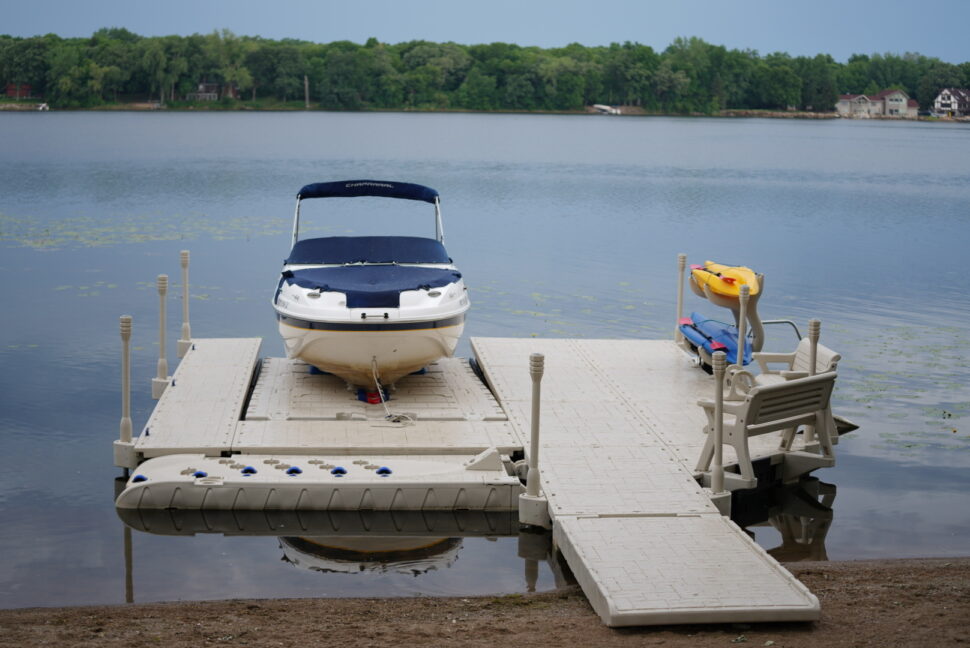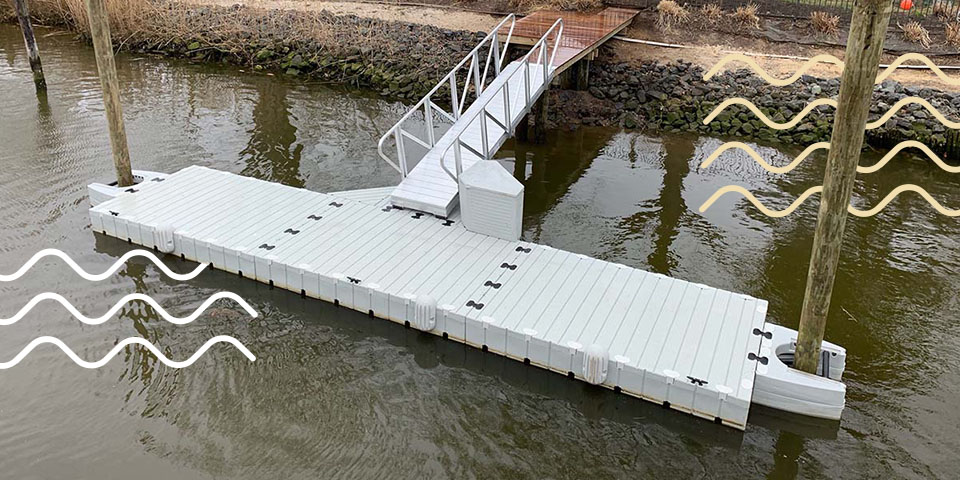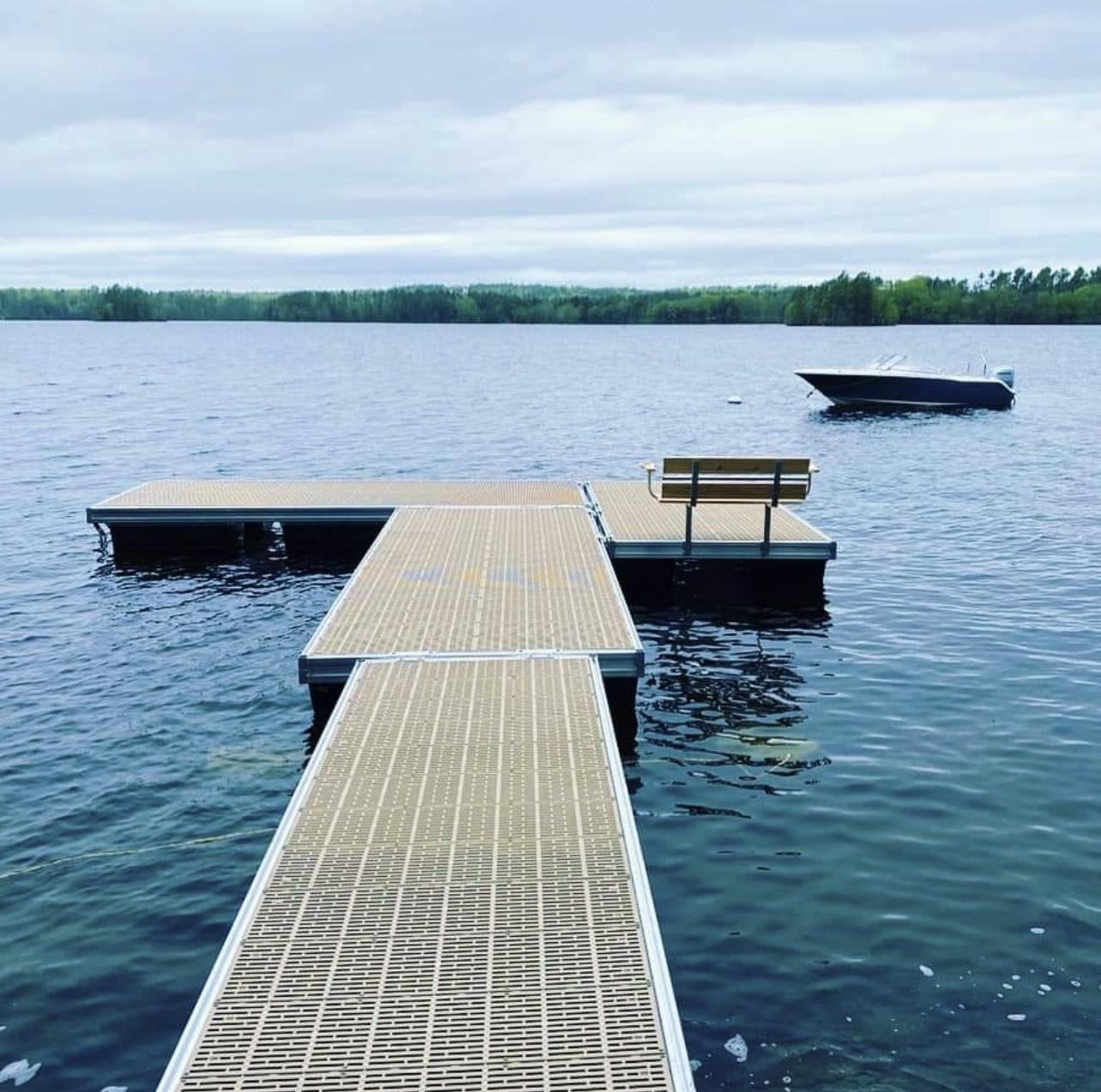Browsing the Options: Choosing the Right Dock Company for Your Floating Dock Task
Upgrade Your Waterfront With Long Lasting Floating Docks
Updating your beachfront with sturdy floating docks can dramatically enhance both capability and aesthetic appeals, offering a flexible solution for numerous water activities. With an array of products offered, consisting of low-maintenance alternatives and typical timber, picking the best dock can enhance your individual style and satisfy sensible needs.
Advantages of Floating Docks
Floating docks deal a wide variety of benefits that boost their appeal for different maritime applications. Among the main advantages is their adaptability to changing water levels - floating dock company. Unlike typical set docks, floating docks fluctuate with the tide, making certain constant access for watercrafts and boat no matter environmental problems. This function substantially decreases the threat of damage to vessels, as they stay safely anchored even during fluctuations in water depth.
Furthermore, floating docks are less complicated to install and relocate, offering flexibility for seasonal or temporary use. Their modular design permits customization to fit certain requirements, whether for exclusive marinas, domestic beachfronts, or business applications.
Furthermore, floating docks create minimal disturbance to the marine environment, protecting local communities and minimizing the likelihood of erosion. They additionally offer improved security and stability for customers, as their resilient nature provides a much more forgiving surface than stiff frameworks.
In addition, floating docks can promote a varied variety of tasks, such as fishing, swimming, and entertainment boating, making them a valuable property for waterside growth. Their adaptability and functionality make floating docks a preferred choice for a range of marine jobs.
Picking the Right Materials
Selecting proper products for floating docks is essential to their longevity, performance, and overall efficiency. When choosing products, think about factors such as environmental direct exposure, upkeep needs, and structural stability. Typical materials consist of timber, plastic, light weight aluminum, and composite options, each offering distinct benefits and downsides.
Timber, while visually pleasing, needs routine maintenance to avoid rot and degeneration. Pressure-treated wood can enhance toughness, yet it might still catch water damage in time. Plastic drifts, commonly made from high-density polyethylene, are resistant to corrosion and need very little upkeep, making them an attractive selection for low-maintenance applications.
Light weight aluminum is one more practical choice, understood for its stamina and light-weight buildings. It is resistant to rust and can endure extreme climate conditions, although it might be more expensive than other materials. Composite materials integrate the most effective attributes of wood and plastic, supplying a low-maintenance and resilient choice that resembles the appearance of wood without the linked disadvantages.
Ultimately, the option of product need to straighten with the meant use, ecological considerations, and budget restraints, ensuring a useful and resilient floating dock that fulfills your particular demands.
Installment Refine Summary
The successful installment of a floating dock counts on mindful preparation and implementation, guaranteeing that it runs successfully in its intended environment. The very first step entails examining site conditions, including water deepness, coastline functions, and prevailing weather condition patterns, which will inform the dock style and anchoring system.
Following the website evaluation, the next phase is to prepare the floating dock elements. This includes setting up the frame, protecting drifts, and connecting any kind of required hardware. It is vital to make sure that all connections are water-resistant and durable to withstand marine problems.
As soon as the dock is assembled, the installation procedure starts with positioning the dock in the water. This can include a crane or other lifting equipment, especially for bigger frameworks. Correct placement is important for capability and safety.

Maintenance Tips for Durability
Normal maintenance is necessary for ensuring the durability and optimum performance of a floating dock. To attain this, start with routine evaluations a minimum of two times a year, concentrating on the integrity of the dock's structure, including the flotation tools and linking equipment. Seek indicators of wear, damage, or corrosion, and attend to any type of problems quickly to avoid additional degeneration.
Cleaning up is one more crucial over at this website aspect of maintenance. Get rid of debris, algae, and barnacles from the dock's surface to avoid unsafe problems and preserve aesthetic allure. Make use of a light detergent and a soft brush to stay clear of damaging the dock's materials.
In addition, make certain that the dock is properly secured and secured to endure seasonal changes in water levels and climate problems. Inspect the anchoring system for stability and make adjustments as necessary.
Enhancing Your Outdoor Visual
To produce a visually enticing outside area, incorporating a drifting dock can significantly improve the overall visual of your waterfront residential property. Floating docks are not just practical but can also offer as a striking centerpiece that matches the natural environments - floating dock builder. Readily available in numerous products and designs, these docks can be customized to match your residential property's architectural style and landscape
The enhancement of decorative elements, such as integrated lights Check Out Your URL or trendy railings, even more boosts the dock's aesthetic allure. Consider making use of natural timber coatings, which mix perfectly with the environment, or selecting contemporary materials like light weight aluminum or composite decking that provide a streamlined, contemporary appearance.
Tactically putting planters or seating locations on or around the dock can develop inviting spaces that encourage leisure and enjoyment of beachfront sights. Additionally, integrating shades and appearances that integrate with your landscape will develop a natural visual throughout your outside area.

Conclusion

Upgrading your waterside with resilient floating docks can significantly boost both performance and visual appeals, supplying a versatile service for numerous water tasks. Unlike standard fixed docks, floating docks increase and autumn with the trend, ensuring regular access for boats and boat no matter of ecological conditions.Selecting proper materials for floating docks is essential to their durability, performance, and general efficiency.Once the dock is assembled, the installation procedure starts with placing the dock in the water.In summary, floating docks deal many advantages, including versatility to water level changes and a range of material alternatives.